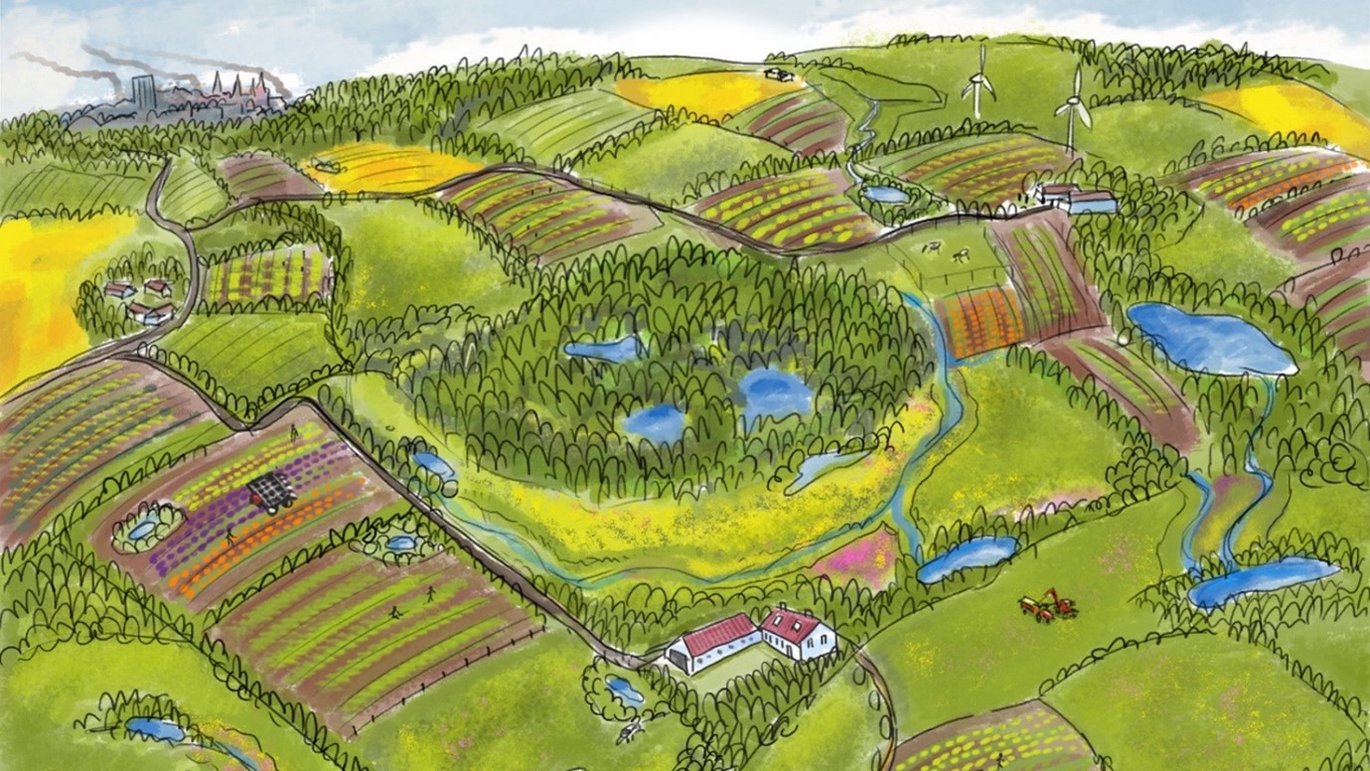Toolkit shall increase biodiversity in agricultural landscapes
The concept of 'land-sharing' aims to provide more space for nature in cultivated areas. In return, the biodiversity will help increase our production.

Biodiversity is chirping birds in and around the fields, buzzing insects, partridges, hares, and other larger animals living in agricultural landscapes, in addition to the diversity of plants and other more or less visible organisms. Biodiversity is the variety of life. The diversity of nature has value, even though it is difficult to measure in terms of money. But a part of the field biodiversity has economic value: This applies, for example, to birds, spiders, parasatoid wasps, and other animals that naturally prey on pests that attack our crops; and bees and other insects that help in cross-pollinating crops like rapeseed, clover, and horsebean. If we can assist the beneficial organisms in agriculture, we can reduce losses due to pests and increase the production of insect-pollinated crops.
If we have a high diversity of beneficial organisms, we can also better rely on a stable output from nature. If conditions are unfavorable for ladybirds that feed on aphids in a given year, biological control, for example, can be maintained if there are other natural predators in the field, such as hoverflies, some of which have larvae that also feed on aphids. However, biodiversity - both the functional and more general kind - is often challenged in intensively cultivated agricultural land, where there are few undisturbed places for foraging, nesting sites, and other habitat requirements for wild species.
Cultivated land accounts for over half of the land area in Denmark. Furthermore, Danish agricultural landscapes are typically mosaics of cultivated fields separated by field boundaries, living hedges, and other small biotopes that serve as important habitats for wild animals and plants. However, many organisms are not confined by human-made or natural boundaries - but move between cultivated and uncultivated areas and across farms. Biodiversity in the field, in other words, depends on the biological diversity that resides in the adjacent natural areas, and vice versa.
Therefore, we believe that a holistic oriented approach is a necessity to improve living conditions for the beneficial organisms and other wild species that live in and around fields in agricultural landscapes. If natural organisms are given space in cultivated areas, functional biodiversity, in turn, will help increase our production. This is the mindset behind the approach of "land-sharing," which means that both nature and agriculture should share the space in agricultural lands. This is often seen in contrast to "land-sparing," where the production is intensified to increase yields on cultivated land, which can free up space for pure nature.
The Organic+ project is working on increasing biodiversity in agricultural landscapes across cultivated fields, as well as small and larger areas with nature. More specifically, we investigate through computer simulations how populations of selected organisms (beneficial insects, mammals, and birds) develop in digitized landscapes. Simulations of scenarios with and without various biodiversity measures, over a span of 20-50 years, provide an indication of how agricultural initiatives can affect wild species and, in turn, regional and long-term biodiversity.
If we find opportunities to improve agricultural areas as habitats for wild organisms, cooperative practices are an important strategy to promote biodiversity. That is, a collaboration among farmers in the same area, integrating both agriculture and nature over a larger area. In addition to this, cooperation throughout the value chain of farmers, retailers, and consumers, where everyone works towards a greater consideration for nature. This can be referred to as a holistic oriented approach in a broad sense!
Organic+ is part of the Organic RDD7 Programme, coordinated by ICROFS with funding from GUDP under the Ministry of Food, Agriculture and Fisheries.